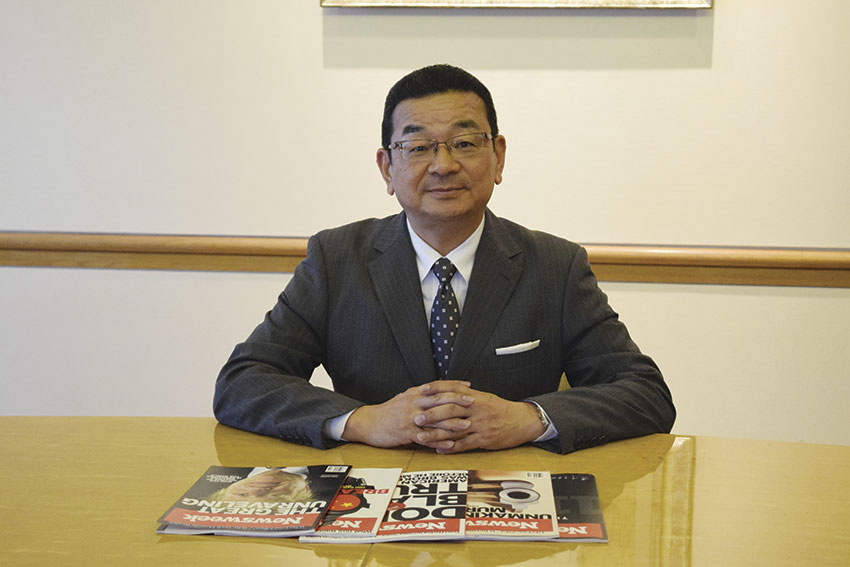Through the promotion of new technologies, artificial intelligence and the Internet of things, Japan is positioning itself to be a major figure in the fourth industrial revolution

While the Olympics in Japan in 2020 offers some economic respite for the island nation, Prime Minister Shinzo Abe has identified the next economic driver to further stimulate Japan’s economy. Mr. Abe’s trump card to grow the economy is to promote the fourth industrial revolution aimed at boosting productivity through the use of new technologies, artificial intelligence, and the Internet of things (IoT), and connecting these services with industry. The fourth industrial revolution has been the next economic driver for some of the world’s most technically advanced regions, like Europe, the U.S. and now Japan.
As a result of decreased investment in research and development technologies and a lack of investor confidence triggered by the global financial crisis, the government has compiled a new draft that features a strategy to promote the fourth industrial revolution as an economic booster. The draft includes the establishment of a public-private council to drive this campaign and assist Mr. Abe’s pledge to increase the country’s annual nominal gross domestic product to 600 trillion yen (roughly $5.7 trillion) by 2020.
If Japan is to realize this target, it will need to look abroad to other markets for further growth. The Trans-Pacific Partnership (TPP) trade deal is a tool that local companies can leverage to increase profitability and competitiveness globally. In a bid to increase international revenues to balance the lack of domestic consumption, many firms have already aligned their companies to go global.
Ichizo Yoshikawa, President and Chairman of Suminoe Textile Co., Ltd., which supplies interiors to the automotive and hotel industries worldwide, has many foreign clients, especially in the United States. “Companies have to grow,” says Mr. Yoshikawa. “If you are thinking about growing in scale, it is indispensable to go global. We have to have two separate strategies: the global strategy and the domestic strategy.”
Mr. Abe said recently that the “fourth industrial revolution depends on us and provides tremendous opportunities that Japan cannot afford to miss.” This revolution is not only about creating cutting-edge technology, it is also about finding solutions to improve people’s lives across the globe.
The necessity to foster superior domestic technologies as a means of growth has been embraced by the likes of local firm Harmonic Drive Systems Inc. (HDSI), which produces and sells mechatronic products and speed reducers, and is forecasting major demand for its products. President and CEO of HDSI Akira Nagai says, “The reason I have put some expectation of growth in the future is because the ‘cobots’, which is an abbreviation of collaborative robots, are expected to work together with human beings. This will grow drastically. According to a Barclays report, the market will reach 1.5 trillion yen by 2025.”
HDSI is also an excellent example of successful Japanese-U.S. collaboration, having started out four decades ago with an ingenious American inventor, C.W. Musser – the father of some 1,500 patents. ”The reason why we have been successful executing a trans-national operation is because we have a unique product,” adds Mr. Nagai.
As one of the driving factors behind the next revolution is the IoT, companies are already collaborating with developed ICT markets, such as Japan’s Systena Corporation, which is using online technology to complement big American companies in the auto sector.
“We are especially looking at the automobile industry. We are working together with automobile manufacturers to facilitate not only the automatic driving technologies, but also thinking about how we can link sensing technologies with IoT,” says Kenji Miura, President and RD of Systena Corporation.
With the new structural reforms focusing on improving productivity and dramatically increasing foreign revenues, the fourth industrial revolution is a monumental growth sector for the Japanese. Many of Japan’s largest companies are leading the charge in this space. Takahiro Hachigo, President, CEO and RD of Honda Motor Co., Ltd, says, “The fourth industrial revolution implies robotics and other hardware fields where Japan is leading, for sure.”
The IoT and artificial intelligence, as well as the TPP combined, have provided this previously isolated nation with the right foundations to be once more a dominant player in globalization’s new wave.
0 COMMENTS